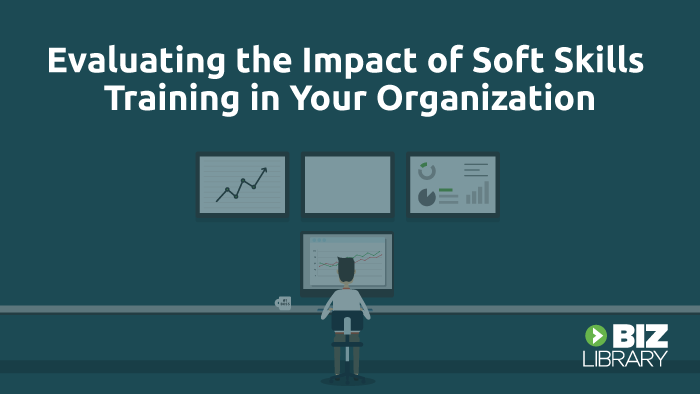
Did you know that loyal customers are worth up to 10 times what they spend on their initial purchase?
When it comes to paying customers, there’s more at stake than just the current transaction. There’s the loyalty that drives a continuing relationship, with a stream of future revenue hanging in the balance.
Let’s talk about why retaining customers is so valuable for your organization, and why the best strategy for creating customer loyalty and retention goes hand in hand with how you’re engaging and developing employees.
The Importance of Customer Lifetime Value
The longer a client stays with you or keeps coming back to spend more, the higher their customer lifetime value (CLV).
Customer lifetime value measures how much business you can expect to do with a customer over the anticipated length of your relationship.
When your organization is able to increase the average CLV, you’ll see revenue go through the roof. According to data by Bain & Company, a 10% increase in customer retention yields a 30% increase in overall value of a company.
The “lifetime” metric can vary drastically… for some businesses it could realistically only be a few years – for others it could be an actual lifetime.
Let’s look at grocery stores to illustrate the importance of customer lifetime value.
Average consumers tend to shop in three grocery stores: the main store, visited regularly for most of their needs, the occasional store, for specialty items, and the emergency store, such as a quick shop.
So for how long do they shop their main grocery store? The National Association of Homebuilders estimated that homeowners move about once every 13 years.
If you assume they do their main grocery shopping at a nearby store once each week, and they spend about $150 each visit, then the total revenue one customer generates for a grocery store over those 13 years is around $100,000!
The “lifetime” metric can vary drastically depending on the industry and type of business. For some it could realistically only be a few years – for others it could be an actual lifetime.
But whatever your business or industry, you have a CLV, and one of the biggest mistakes you can make as an organization is to ignore the role CLV plays in your relationships with customers.
Employees Can Drastically Affect CLV
There are several elements to keeping customers satisfied, but one of the most influential factors is how your employees treat them and represent your company.
If employees are rude or flippant with customers, don’t answer their questions, or make them angry, guess what happens to that CLV?
It drops to ZERO.
91% of unhappy customers will not willingly do business with you ever again.
And those dissatisfied customers are telling their friends about it.
According to American Express, whenever you lose a customer, you’re shutting down an average of 16 other CLV money streams before they could even get started.
In our grocery example, that’s up to $100,000 lost with the current customer, and potentially another $1.6 million lost from the people who were told about it!
On the flip side of this, when your clients and customers receive exceptional customer service, they’ll be sending you referrals left and right.
This decreases your costs to acquire new customers through marketing, and increases overall profitability!
Remember, customer loyalty and retention strategies are closely tied to customer acquisition efforts – especially in today’s world of online reviews and sharing on social media.
Ilya Pozin says in an Inc.com article, “Highly engaged customers are incredibly valuable, purchasing 90% more frequently than average customers and spending 60% more per purchase. These differences add up fast, and ultimately engaged customers deliver three times the annual value.”
Focus on Employees’ Experience to Improve Customer Retention
There are several ways to work on keeping your client base engaged and seeing value in your offerings, but one of the most crucial is the experience that clients and customers have working with your team.
The quality of your customer service will make or break your customer retention efforts.
Yes, your product and service offerings matter too, but the way you improve those all ties back into how well you’re listening and tending to the wants and needs of your current clients.
“Good service doesn’t cost. It pays.”
Gladly’s 2018 Customer Service Expectations survey found that out of 1,000 consumers polled, 92% would stop buying from a company after three or fewer poor experiences with customer service, and 26% would stop after only one poor experience.
Yikes! So, how do you prevent bad customer service experiences with your company?
You focus first on employees’ experiences with your company. Not customers or clients first, and not shareholders first.
Sir Richard Branson, founder of the Virgin Group, finds it surprising that this isn’t a common mindset among organizations today. In an interview with Inc., Branson says, “My philosophy has always been, if you can put staff first, your customer second, and shareholders third, effectively, in the end, the shareholders do well, the customers do better, and your staff are happy.”
Clients and customers are happier when they’re interacting with people who are obviously dedicated to their work.
LISTEN NOW: Podcast Episode 24 | Delivering Exceptional Customer Service
So many people want to do meaningful work where they know they’re helping others. The entire point of customer service is to help others, so hone in on the deeper aspects of how your reps are helping clients and customers on a personal level, and reiterate that message to your employees clearly and often.
If you want to see customer retention rates increase and revenue increase right along with them, you have to invest in employee engagement and retention strategies.
Show your people that you’re dedicated to heightening their success on the job, expanding their skills and abilities, and seeing their overall well-being improve.
What Does Dedication to Retention Look Like?
Your customer retention strategies work hand-in-hand with your employee retention efforts. There are numerous ways to work on employee engagement and retention, but these are some of the most effective:
- Developing soft skills of all employees, particularly problem solving and emotional intelligence
- Giving employees the tools to perform their jobs well
- Encouraging feedback top-down AND bottom-up
- Providing accessible, self-directed training opportunities
- Empowering employees to solve problems on their own, and collaborate to find viable solutions
There’s a lot packed into each of those points, so let’s look at a few of them a little closer.
A lot of the frustrations with customer service happen when frontline employees aren’t empowered to solve difficult problems. When they just have to say “I’m sorry, I’ll have to escalate this,” it adds time and frustration to the interaction, which prompts negative feelings toward your brand.
Providing training on soft skills like problem solving, emotional intelligence, active listening, decision making, etc. helps your client-facing employees to be more capable, more effective, and more engaged in their roles.
When you provide soft skills training that encourages employees to be creative and delight customers, you’ll see mutual benefits to both customer retention and employee retention in your company.
Creating open channels for feedback is another way to empower employees. This is how you learn the valuable information they have to offer while simultaneously showing them that their voice in the organization matters.
When it comes to making your products and services more appealing, your frontline employees are learning every day what it is your customers want. Open up the lines of communication so your senior leadership can get direct feedback from customer representatives and account managers about what will keep clients loyal.
Providing training on soft skills like problem solving, emotional intelligence, active listening, decision making, etc. helps your client-facing employees to be more capable, more effective, and more engaged in their roles.
Feedback is a two-way street, so while you want to hear from employees, you also want managers to understand how to give them feedback correctly to help improve their performance.
Coaching skills are increasingly important for managers and supervisors – employee engagement is at its best when people know there’s someone in their corner, helping them to improve their skills, rather than giving directives that stifle creative thinking and solutions.
How the Right Training Yields the Right Results
If the idea of training on soft skills and coaching to increase customer retention sounds like a bunch of fluff, then remember Sir Richard Branson’s advice on putting employees first to see happier customers.
Then, consider this training success story about Watco Companies, a transportation company that constantly faces heavy competition for customer loyalty. They’ve proven that employees’ soft skills have a huge impact on the bottom line. Hear from their Director of Training and Development, Cris Hatcher:
Read more about how Watco used their training program to decrease employee turnover and increase customer satisfaction.
If you’re ready to learn more about how soft skills training for customer service reps can impact business goals, download your free copy of the ebook below.
It discusses how learning soft skills can drastically improve your employees’ performance and engagement at work, and gives several examples of how to measure that impact on budget and goals.

